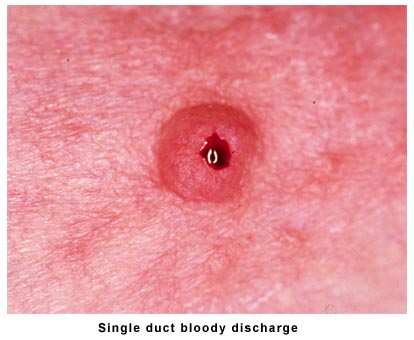
Nipple discharge can be a concerning symptom for many women. Although it can be an early symptom of breast cancer, most cases are due to benign conditions. It's crucial to differentiate between benign and malignant discharge to avoid any misdiagnosis or misinterpretation of the symptoms. Here are some guidelines to help you understand nipple discharge:
Types of Nipple Discharge
- Spontaneous Discharge: Discharge that comes out without squeezing is the only type of discharge of concern. If the discharge only occurs with squeezing, it is usually not a concern.
- Color: Worrisome discharge is typically either bloody or clear. Discharge that is green, milky, or other colors is almost always of no concern. However, if you have large amounts of milky discharge and you are not breastfeeding, it should be brought to the attention of your physician.
- Single verses multiple ducts: If the discharge is consistently coming from one spot on the nipple, it is of more concern. However, if a woman squeezes her breast and notes discharge from multiple spots on the nipple, she can be reassured that the discharge is usually nothing to worry about.
How We Approach the Problem of Nipple Discharge
History and Physical Examination
We begin with a thorough history and physical examination, including an updated mammogram. If the examination and recent mammogram are negative and the discharge is non-spontaneous, we provide reassurance to the patient and recommend she examine her bra and night clothes for spotting. If spotting is observed, she should return for re-evaluation. If no spotting is observed, we recommend routine follow-up.
Ductogram
If the discharge is spontaneous and originating from a single duct, we perform a ductogram, a procedure in which contrast material is placed into the duct under local anesthesia and an X-ray is taken. If an abnormality is detected, the patient is taken directly to the operating room for removal of the abnormal duct.
If the ductogram is normal and there are no technical problems, we advise the patient to monitor the discharge. If the discharge persists, we repeat the ductogram. If the cause of the discharge is still unclear after repeat ductograms, we usually proceed to surgical exploration of the duct.
Our approach has been used in hundreds of patients with spontaneous single duct nipple discharge and has consistently produced excellent results. In 90% of cases, the biopsy is benign and the discharge stops after the removal of the abnormal duct. Most cancers identified with this procedure are early cancers with a good prognosis.
Ductoscopy
Ductoscopy is a newer technology that allows direct visualization of breast ducts and can be performed in the office. Its role in diagnosis and management is still being defined.
Ductal Lavage
Ductal lavage is a relatively new technique that evaluates a large sample of cells washed out from the ducts. However, we have found the limited benefit does not justify the cost.
It is important to note that nipple discharge can be caused by a wide range of conditions, and breast cancer is only one of them. With proper evaluation and management, the vast majority of patients with nipple discharge can be treated successfully.
Pictures of patients with nipple discharge and ductogram
-
Abnormal Ductogram in patient with DCIS
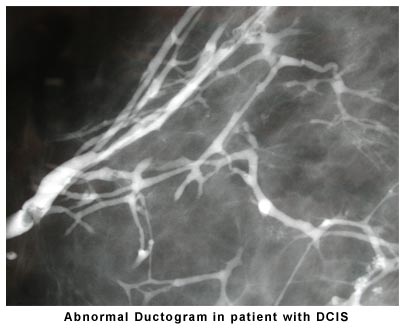
-
Ductogram showing Papilloma
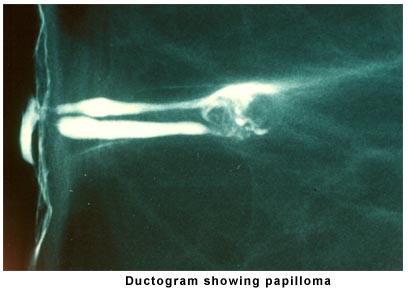
-
Multi-Duct Discharge
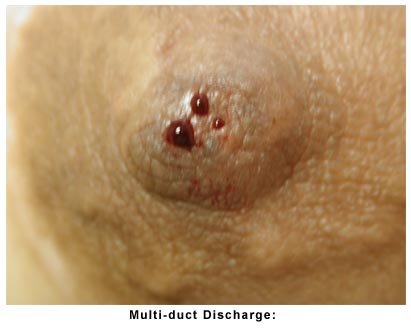
-
Single Duct Milky Discharge
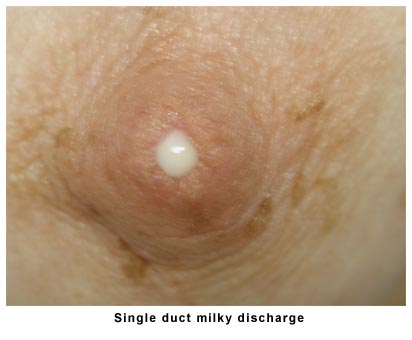
-
Single Duct Bloody Dischargee
